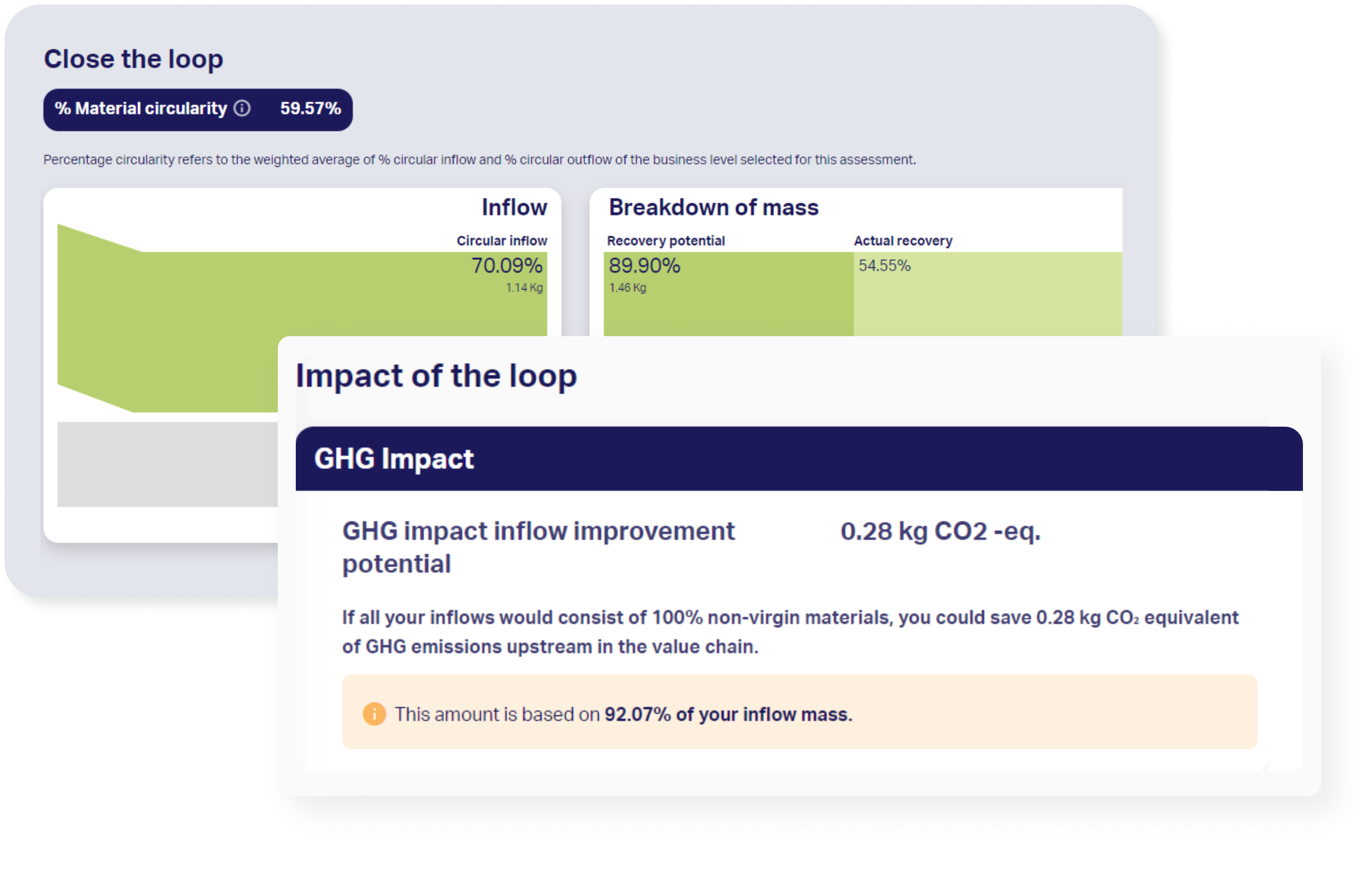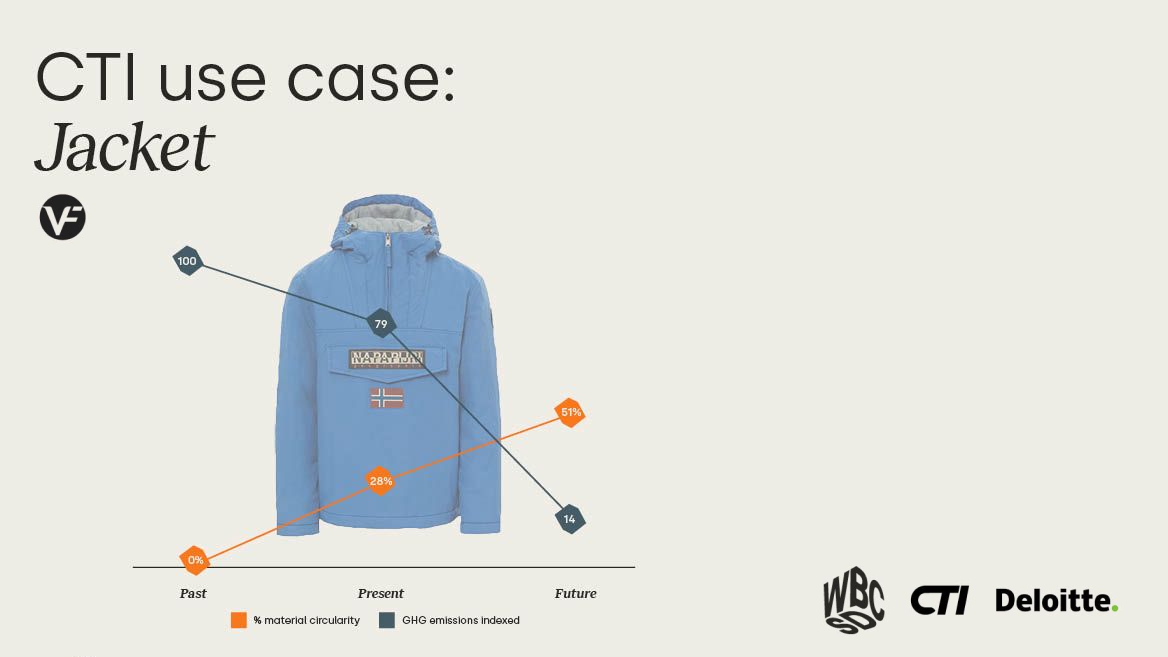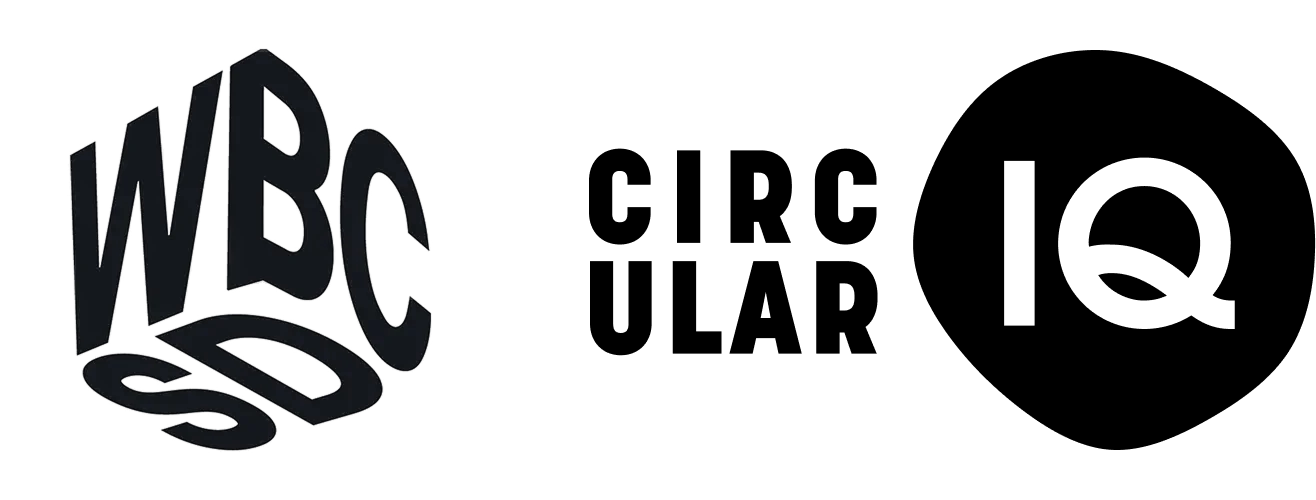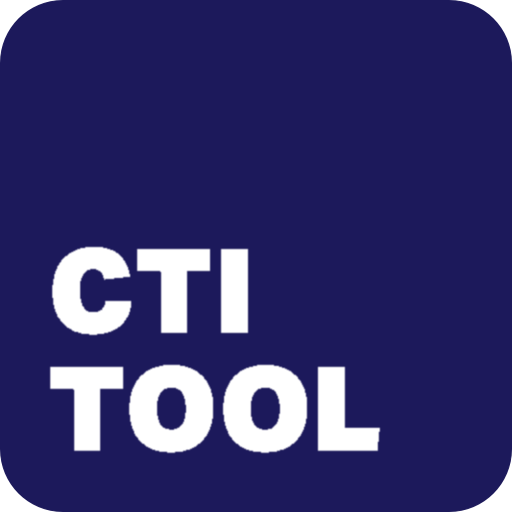Tailor-made circularity software for the fashion industry
Explore which use cases work for you and transform your business

Why adopt circular economy?
The fashion industry faces unprecedented challenges that make circular economy adoption a strategic imperative, not just a sustainability initiative. With climate change threatening 50% of global cotton crops, 90% of companies lacking value chain data for upcoming regulations, and traditional high-volume, low-cost models becoming unsustainable, the time to act is now.
- Financial gains: Brands can unlock up to $100 million over 5 years by shifting to regenerative materials.
- Higher margins: Companies moving to circular models report an average 6% profit increase.
- Cost savings: Circular strategies cut material use and enable new revenue streams from rental, resale, and repair.
- Environmental impact: Up to 86% reduction in GHG emissions with recycled polyester; 95% lower biodiversity impact with regenerative cotton.
- Market edge: Consumer demand for circular products is rising; early adopters like Patagonia and Nike are already reaping brand and loyalty benefits.
Why adopt circular economy?
What’s new in version 2.0 of the sector guidance?
- Regenerative Inflow Tracking: Measure and verify regenerative agriculture claims with built-in frameworks from Textile Exchange and Cradle-to-Cradle
- Enhanced Design Assessment: Quantify recovery potential across physical durability, emotional durability, modularity, and recyclability
- Social Impact Module: Assess quality jobs, social risks, and just transition metrics
- Automated CSRD Reporting: Generate ESRS E5-compliant reports with one click
Secure budget and management buy-in now!
Download our powerpoint deck
Explore the stories of leaders in the circular fashion economy
VF Corp
Sun Tekstil
Looking at Sun Tekstil’s approach, who focused on facility level assessments, CTI Tool sets the stage for a robust company-wide circularity baseline score. This is extremely valuable as it allows you to identify risks and opportunities easily and scale best practices across facilities.
CSRD Reporting
With upcoming CSRD reporting standards being enacted, the need for circular economy reporting was never greater. In the last use case we explore how CTI Tool gets you ready to report on ESRS E5, the circular economy part of CSRD.
USE CASE
VF Corp

In the Napapijri use case, VF Corporation aimed to quantify the greenhouse gas emissions reduction achieved by using recycled polyester instead of virgin polyester, focusing on the GHG impact of the material inflow due to changes in design. Here VF learned they could avoid 80% of their carbon emissions by reconsidering- and optimizing material-choices.
Leveraging emissions factors from third-party sources, VF calculated the climate-friendly benefits of recycling polyester by comparing the emissions associated with recycled and virgin polyester for the same weight of material provided.
CTI Tool makes this easy and intuitive for the people involved; whilst at the same time pointing out which materials and suppliers to contact in order to move the needle. The dashboards and reports can then be used to support the conversations with the suppliers and evaluate the best route forward.

USE CASE
Sun Tekstil
The Sun Tekstil use-case leverages facility level assessments to evaluate its performance focusing on CTI’s water- and energy indicators. Showcasing a whopping 95% water recovery rate; helping to reduce local water-stress and enhance water circularity.
In 2022, Sun Tekstil utilized sustainable raw materials for 64% of its products. Measuring the inflow circularity on a facility-level also ensures that the approach is not only insightful, but also quickly scalable. This comprehensive approach to sustainability underscores Sun Tekstil’s commitment to circular economy principles and environmental stewardship throughout its operations.
Leveraging CTI Tool for facility-level assessments is an easy and reliable approach for establishing clarity on company-wide circularity performance fast. Especially with the focus on water and energy indicators, CTI Tool supports the assessments of different facilities and identify improvement opportunities that can be rolled out to other plants.
In addition to water management initiatives, Sun Tekstil is committed to circular design practices and sustainable raw material sourcing. By leveraging the product-as-a-service strategy and integrating eco-design criteria, the company aims to produce high-quality, recyclable, and durable products.

USE CASE
CSRD Reporting

CSRD reporting standards which will be compulsory for a the bigger companies as of next year require you to have a comprehensive understanding of your baseline circularity performance. With CTI Tool it has never been easier getting to that baseline and fulfil the reporting requirements of ESRS E5. Whether you produce within the EU or abroad, chances are you or one of your downstream channel partners fall under the CSRD umbrella and will be required to report a flurry of data points. Now is the time to start your data collection and find where your gaps are.
Whether you opt for a product-based approach that can be scaled up (bottom-up) or prefer to assess your entire organization by dissecting various product groups or business categories (top-down), our kickstarter program with the CTI Tool ensures you are well-prepared to meet reporting requirements and enhance the circularity of your products and operations.
Leveraging CTI Tool for facility-level assessments is an easy and reliable approach for establishing clarity on company-wide circularity performance fast. Especially with the focus on water and energy indicators, CTI Tool supports the assessments of different facilities and identify improvement opportunities that can be rolled out to other plants.
Once you’ve established clarity on your materiality, we offer guidance on the optimal method for organizing different assessments on your dashboard, empowering your team to independently complete the reporting process and set you up with an improvement strategy that can be acted upon straight away.
Get CSRD-Ready with CTI Tool and the New Fashion Guidance
The Corporate Sustainability Reporting Directive (CSRD) is a little delayed but not out of this world and will become mandatory for companies soon. As a high-impact industry, fashion faces particular scrutiny under ESRS E5, which focuses on resource use and the circular economy. Meeting these complex reporting requirements demands a clear understanding of circular performance across products, facilities, and value chains.
The updated CTI Fashion & Textile Guidance v2.0 provides sector-specific support by aligning CTI indicators with ESRS E5 reporting obligations. It breaks down exactly which data points are needed, such as recycled content, recovery rates, and water and energy usage, and maps them to the regulatory requirements. Designed for the realities of the fashion and textile value chain, it also helps companies identify what data to collect based on their position in the chain, from raw material producers to retailers and end-of-life actors.
The CTI Tool transforms this guidance into action, making it easier to establish your circularity baseline, identify data gaps, and track progress over time. Whether you’re taking a bottom-up approach by assessing products or a top-down view across business units, the CTI Tool supports fast, reliable measurement and reporting. It also enables facility-level assessments to pinpoint opportunities for improvement and roll out best practices across sites. It also guides you in engaging value chain partners for more robust data collection, including preparation for the upcoming Digital Product Passport requirements.
While the CTI Fashion & Textile Guidance v2.0 gives you the methodology, CTI Tool gives you the power to implement it—fast, accurately, and at scale.
- Automated calculations for all CTI indicators
- Data quality tracking from primary and secondary sources
- Supplier collaboration to collect value chain data
- Scenario modeling to test and improve circular strategies
- Progress tracking aligned with industry goals and CSRD requirements
- Export-ready reports for stakeholders and regulators
Contact Roy about kickstarting your first circular project defining your project scope setting your KPIs implementation possibilities
Plan a meeting with Roy
Book a meeting or connect via linkedin
The Circular Transitions Indicators (CTI) framework was developed by WBCSD and 30 of its members. CTI helps companies measure and improve their sustainability performance by providing a simple and sector-agnostic way to measure circularity and giving insights into how to reduce primary resource use and waste generation. Circular IQ’s CTI Tool is the WBCSD endorsed software tool for effectively measuring CTI and leveraging these insights.



